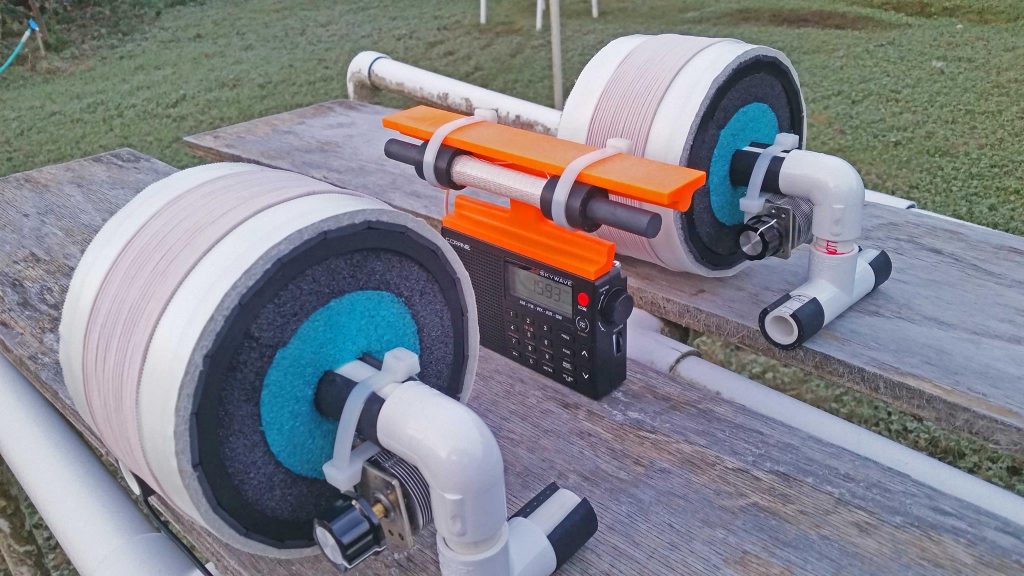Many thanks to SWLing Post contributor and Ultralight DX enthusiast, Gary DeBock, for sharing the following guest post:
 Nulling a local pest with dual FSL Loops
Nulling a local pest with dual FSL Loops
by Gary DeBock
After many dual FSL antenna experiments I’ve finally determined how to effectively cancel out QRM from a local pest that is off to the side (ideally 90 degrees different, but practical from 50 degrees to 90 degrees different) from a weak DX station, although I’m not quite sure of the theory behind this discovery.
This experiment was an attempt to cancel out QRM from a local pest, 950-KJR in Seattle, WA (35 miles/ 56 km to the north) and chase 950-KKSE in Parker, CO (1005 miles/ 1617 km to the southeast) during the early morning hours. The receiver was a basic (non-SSB) C.Crane Skywave, and two identical 5 inch ferrite rod FSL antennas were used. Please refer to the photo (above) to follow this description.
Step 1) Null out the pest station with the portable radio’s loopstick (away from the FSL antennas). Set the radio down in this nulled position, so that the pest station is as weak as possible, while ensuring that there is space to set up the FSL antennas to the back and side (see photo).
Step 2) Take the “Reception FSL” and use it to peak the pest station’s frequency, setting it up parallel to the portable radio as shown, at the position providing the maximum inductive coupling gain. This will temporarily boost up the pest station, which previously was nulled.
Step 3) Take the “Nulling FSL” and pretune the frequency to that of the pest station. You can do this either by adjusting the variable cap plates to match those of the “Reception FSL,” or by temporarily peaking the pest station’s signal in a position in front of the portable radio. After setting this frequency, set the “Nulling FSL” off to the side of the portable radio as shown, with the spacing identical to the spacing between the radio and the “Reception FSL.”
Step 4) Slowly and carefully tune the “Nulling FSL” until you hear the pest station’s signal take a sharp drop. This setting will be very sharp, but once you find this position you will have nulled out the pest very effectively, and if another station is on the frequency, it may suddenly become dominant, even if it is far away (like 950-KKSE in Denver).
Some MP3’s from this morning’s experiments:
950-KJR in nulled position with the portable only
950-KKSE generally dominant over the local pest KJR when the “Nulling FSL” is peaked
Fascinating, Gary! I don’t understand the dynamics of why this works, but it’s amazing that it does so effectively. I can think of two MW frequencies in particular where I could put a system like this to the test.
Thank you for sharing!

